
 Flash News
Flash News
The body of a 29-year-old man in Klos is found after 6 days
Arrested a few meters from SPAK, the Special Prosecution seeks 17 years in prison for the drug 'boss'
Giro D'Italia starts today, here are the road axes that will be blocked in Tirana from 13:00-18:00
Who is the new Pope?
Pope Leo XIV greets the faithful for the first time in St. Peter's Square
What does one bridge over a river tell us about the way Albania is governed?

Alfred Lela
I imagine the Zog Bridge over the Mat River, in the beautiful gorge that emerges from the mountains between Lezha and Mirdita, as an aesthetic and ethical monument in the history of Albania. For example, I see it illuminated from below, giving those arches gilding that pave the way, with light and ease, for the travelers of those parts and nights. Other times I envision it as a staged museum of architectonics in Albania, a space where the Ottoman and the neoclassic collide in harmony, to be haunted by the brutalist architecture of the realist socialism of the dictatorship. Why not, on Sundays I see the wooden stalls and the many goods of the famous market of Milot (making sure though that at the end of the day the boxes and plastic bags are not thrown into the river, as is the custom in Albania). The Bridge could be used also for fairs, and so on.
The Ministry of Culture and Tourism could have joined forces for something like this with the local government. But, before this enhanced imagery, the basic thing had to be done: the preservation of the bridge. One step towards that would have been to 'inventory' the damage and the resilience of the structure, and then the restoration and conservation of the surrounding habitat, ie the river bed. In the entire surrounding area, the bites from the companies that extract materials from the river, make the river bed look like a crater after bombings.
This triumph of private interest, with the disregard of the state and society, for the public good, makes the bridge a tall and long monument of an Albania that builds the future by destroying the past. Make no bets against this axiom: the future without the past does not exist, it is only spiritual schizophrenia that seeks distance where there can be nothing but conception.
The bridge as a monument, and the monuments of the past as a bridge that throw us to the future, are clearly abhorred by the Rama government. The latter, the abomination, PM has shown publicly for all the artifacts left in the architectural and cultural landscape of Albania, from the time of King Zog. The National Theatre, villas in the central and aristocratic neighborhoods of Tirana, Skënderbej square, and so on. Remember that the bridge over the Mat river also dates back to the King's time and is called, as if for a challenge, "the Zog Bridge".
The exact opposite has happened with the stations of communism in the urban or architectural space of Albania. The "House of Leaves" has been repurposed as a museum, and Enver's bunkers in Dajt and Boulevard have been named "BunkArt". The dictator's pyramid or 'mausoleum' is undergoing what Veliaj calls "revival".
Psychologically, apparently, Edi Rama seeks to serve the great rupture that Enver Hoxha introduced in the history of Albania, cutting ties with the Zog period, and starting his own era, both in politics and in urbanization. Rama, it seems, is doing the same.
Here, of course, the Albanian right, both the traditional and the new, has its own faults. They have done little or nothing to stop the rupture and revive the signs of non-communism in the architectural and urban landscape. In any case, this is not permission for the leftist government to consider Albania's history as 'winners and losers, but as a community where we all fall and rise, in bad and good times.
In the end, in order not to take this reflection as another anathema against the government, remember how many millions of euros have been thrown around for the so-called Urban Renaissance. A lot. If it is not malice, it is amateurism. With minimal care and investment, removed even from the UR fat fund, the Zog Bridge would not be today a sleazy symbol of a government seeking to become a regime. Because, history teaches us that before political oppression, regimes start from aesthetic and cultural imposition.
Latest news


Election materials arrive in Kukës, Has and Tropoja
2025-05-09 13:30:20
Electoral flight to Vlora
2025-05-09 13:18:04

IdentiTek offices open on Saturdays
2025-05-09 13:03:13
Will artificial intelligence help us talk to animals?
2025-05-09 12:55:58

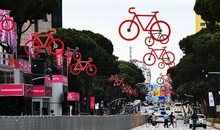

Rama's fourth act: between Brussels and the Mafia
2025-05-09 12:12:47
The body of a 29-year-old man in Klos is found after 6 days
2025-05-09 12:01:27
Berisha: After May 12, this opposition will become the majority in Albania
2025-05-09 11:52:37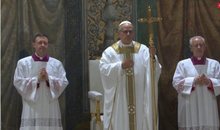
Leo XIV celebrates his first Mass as Pope
2025-05-09 11:42:34

Spaho denounces: SP candidate in Pogradec gives 100 thousand lek for the vote
2025-05-09 11:27:26
Mustafaj: Proud of the worthy campaign of the DP
2025-05-09 11:22:20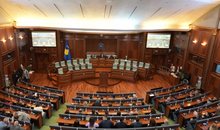
Constitution fails again, Kosovo still without a new Assembly
2025-05-09 11:06:55





"Votes have no price", the US embassy in Tirana 'slaps' Rama
2025-05-09 10:06:49

Two young men arrested for supplying criminal groups with firearms
2025-05-09 09:45:19







Foreign exchange/ How much foreign currencies are bought and sold today
2025-05-09 08:19:18
The gift that Berisha gave to Rama 'live'
2025-05-09 08:13:51
3 signs that show you are spiritually protected
2025-05-09 08:05:39

Bars can't hold back anymore, start increasing coffee prices, 4.7% more in April
2025-05-09 07:46:49

Horoscope, what do the stars have in store for you today?
2025-05-09 07:22:06
Unstable weather, afternoon brings rain
2025-05-09 07:01:29
Morning Post/ In 2 lines: What mattered yesterday in Albania
2025-05-09 06:45:46

How did LaCivita change the DP campaign? Berisha: He studied the opponent
2025-05-08 22:49:51

David defeats Goliath
2025-05-08 22:15:50

Journalist: There are SPAK infiltrators in party headquarters
2025-05-08 21:55:15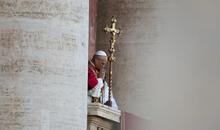
Who is the new Pope?
2025-05-08 21:48:13
Berisha finally reveals when he will retire from politics
2025-05-08 21:33:46


LaCivita in Lezha: Albanians will fire Edi Rama from his job
2025-05-08 21:11:20


Berisha: LaCivita chose us because he believes in Reagan's program
2025-05-08 20:48:40
He rejected America to serve Pogradec, Genti Çela tells about life in "Elevate"
2025-05-08 20:26:28



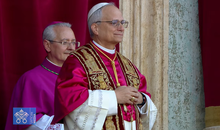
Pope Leo XIV greets the faithful for the first time in St. Peter's Square
2025-05-08 19:29:33




Photo session with LaCivitta in Tirana: For Great Albania
2025-05-08 18:40:18
Source: DASH decision a personal victory for Berisha
2025-05-08 18:30:10
Take off those crazy glasses and see where you've taken him?
2025-05-08 18:02:47
LDK files criminal charges against members of the incumbent Government
2025-05-08 18:02:00


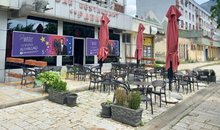




BIRN analysis: Tirana, the determining district for the future majority
2025-05-08 16:04:03




Chris LaCivita's contract with the DP, Berisha: 100% correct and clean
2025-05-08 15:11:11

"These are the peak days", Berisha reveals when he will travel to the USA
2025-05-08 14:45:25


Endless boxes with filled-in ballots, DP demands separation of votes from Greece
2025-05-08 14:11:12


Photo/ Who are the 3 associates of Talo Çela arrested in Dubai?
2025-05-08 13:37:09
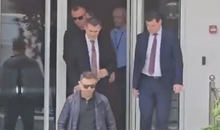
Hetimi për krimet zgjedhore, Altin Dumani zbarkon në Prokurorinë e Shkodrës
2025-05-08 13:06:21
DASH paves the way for Berisha, Alizoti: Great news on the eve of Great Albania!
2025-05-08 13:03:48
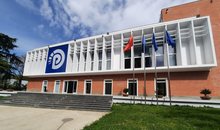
"Freedom works", DP welcomes the US position
2025-05-08 12:48:07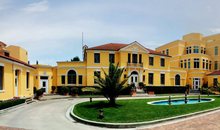
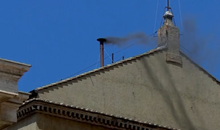
Black smoke rises from the Sistine Chapel, the Vatican still without a Pope
2025-05-08 12:26:18


